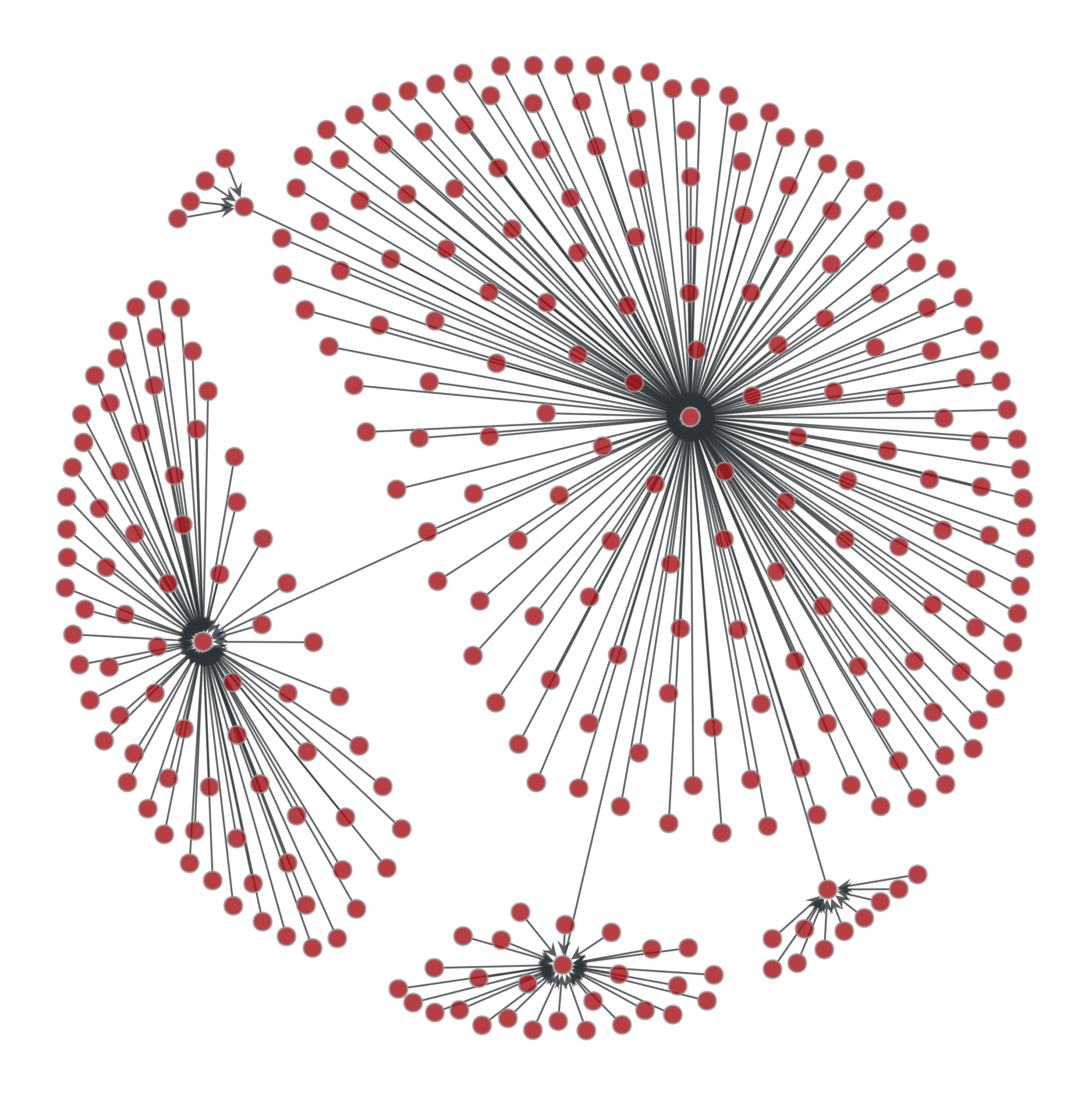arf_layout#
- graph_tool.draw.arf_layout(g, weight=None, d=0.5, a=10, dt=0.001, epsilon=1e-06, max_iter=1000, pos=None, dim=2)[source]#
Calculate the ARF spring-block layout of the graph.
- Parameters:
- g
Graph Graph to be used.
- weight
EdgePropertyMap(optional, default:None) An edge property map with the respective weights.
- dfloat (optional, default:
1) Opposing force between vertices.
- afloat (optional, default:
1.1) Attracting force between adjacent vertices.
- dtfloat (optional, default:
0.001) Iteration step size.
- epsilonfloat (optional, default:
1e-6) Convergence criterion.
- max_iterint (optional, default:
1000) Maximum number of iterations. If this value is
0, it runs until convergence.- pos
VertexPropertyMap(optional, default:None) Vector vertex property maps where the coordinates should be stored.
- dimint (optional, default:
2) Number of coordinates per vertex.
- g
- Returns:
- pos
VertexPropertyMap A vector-valued vertex property map with the coordinates of the vertices.
- pos
Notes
This algorithm is defined in [geipel-self-organization-2007], and has complexity \(O(V^2)\).
References
[geipel-self-organization-2007]Markus M. Geipel, “Self-Organization applied to Dynamic Network Layout”, International Journal of Modern Physics C vol. 18, no. 10 (2007), pp. 1537-1549, DOI: 10.1142/S0129183107011558 [sci-hub, @tor], arXiv: 0704.1748v5
Examples
>>> g = gt.price_network(300) >>> pos = gt.arf_layout(g, a=5) >>> gt.graph_draw(g, pos=pos, output="graph-draw-arf.pdf") <...>

ARF layout of a Price network.#